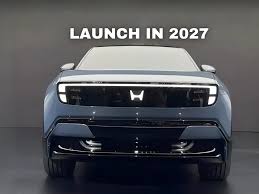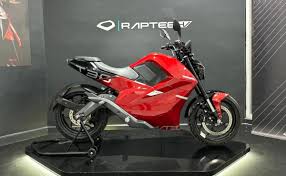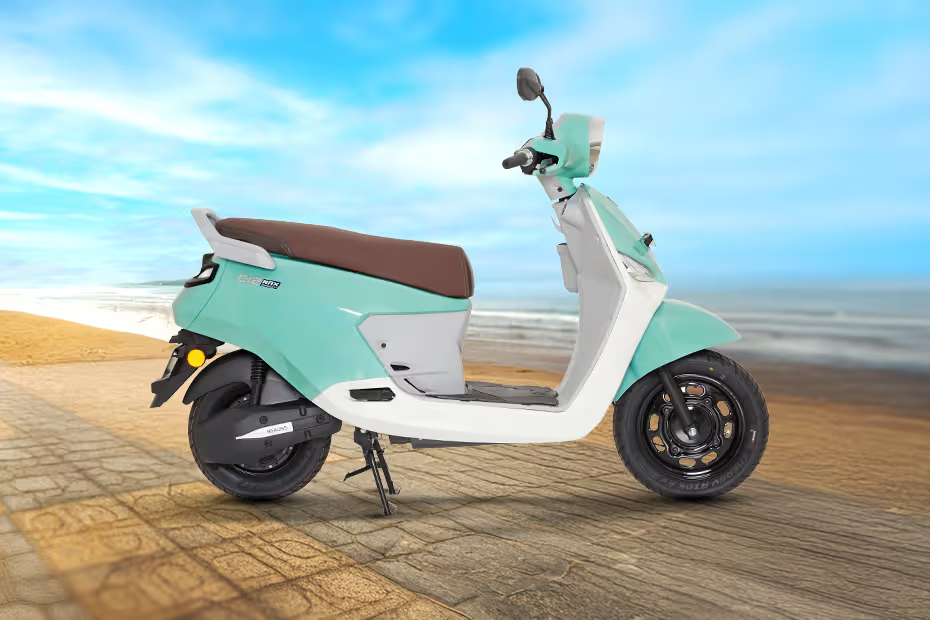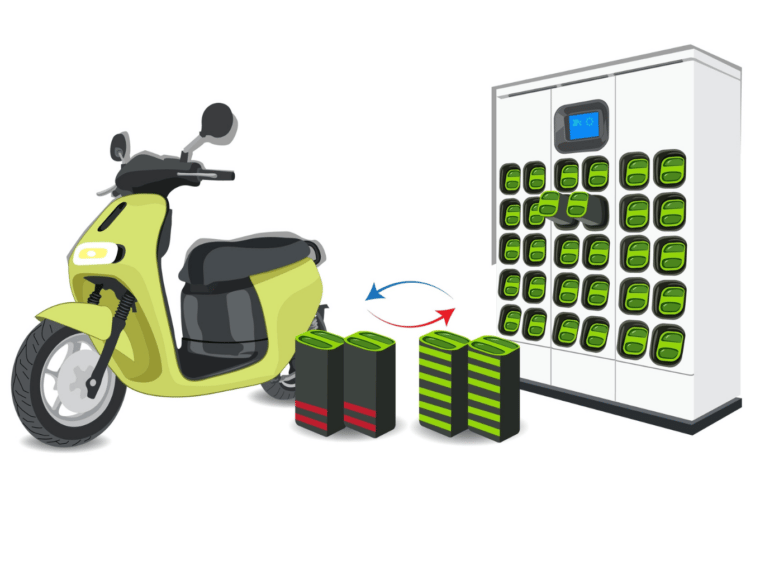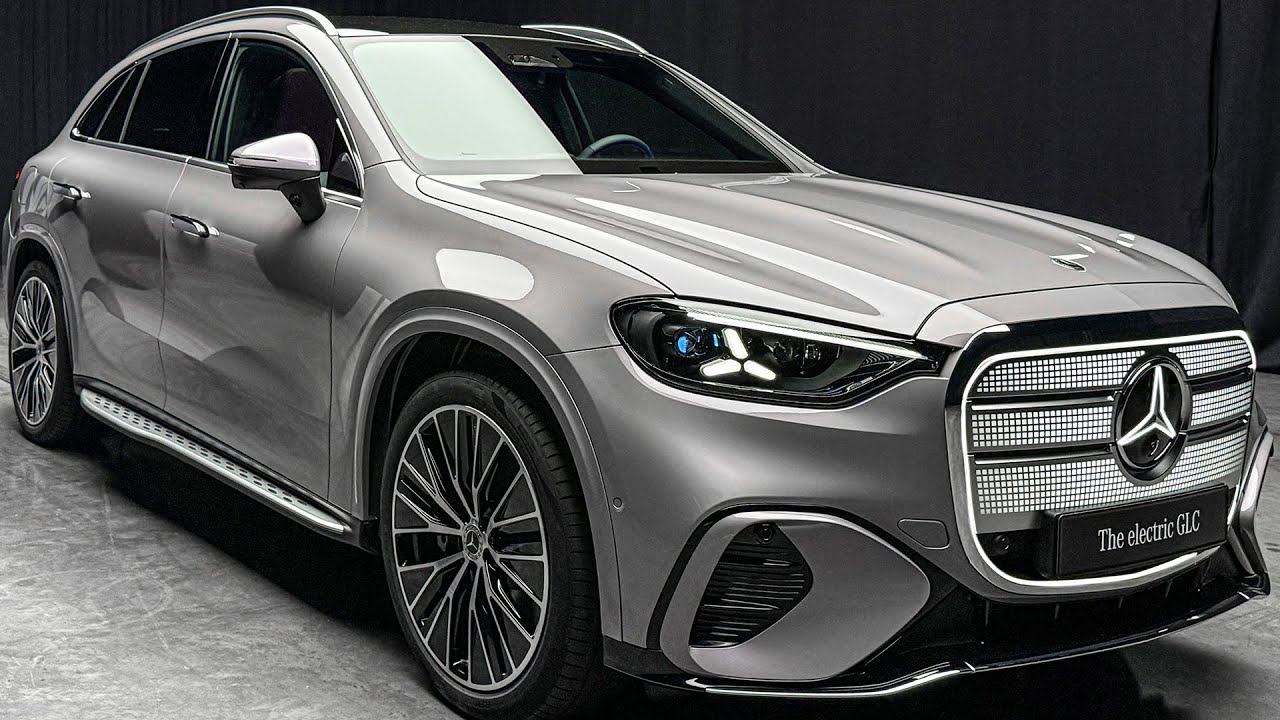Introduction
Honda, one of the world’s most reliable automotive brands, is undergoing a significant shift to all-electric. Honda’s global EV Honda 0 α strategy looks toward carbon neutrality by 2040, with a bold vision to introduce several next-generation electric vehicles under its new “Honda 0 Series” brand. This shift represents a new start — an entire rethink of how vehicles are made, driven, and enjoyed in the electric age.
Honda 0 α (Alpha) EV Reveal:
- Honda formally unveiled the zero α (Alpha) EV as the inaugural model in its visionary “Honda 0 Series.”
- The use of “0” in the model name signifies a return to the beginning point — embodying Honda’s approach to conceptualizing mobility anew for the electric era.
- Alpha (α) headlines the series as the company’s electric SUV concept flagship, fusing performance, eco-friendliness, and innovative Japanese design concepts.
Futuristic Design, Aerodynamics & Sustainability:
- The Honda 0 Alpha follows a “Thin, Light, Wise” design principle — emphasizing aerodynamic performance, less weight, and smart engineering.
- Its low, aerodynamic profile and streamlined curves optimize range and performance while exuding a bold road presence.
- The Alpha embodies Honda’s dedication to sustainability and innovation in all facets.
Global Debut & Concept Overview
The Honda 0 α (Alpha) EV concept-to-production prototype represents Honda’s next 10 years of innovation, focusing on human-centred design, an emotional driving experience, and sustainable engineering.
Honda’s “0 Series” Design Philosophy — Zero Emissions, Zero Stress, Zero Compromise:
- The Honda 0 Series is built on three philosophies — Zero Emissions (a complete transition to clean energy), Zero Stress (a simple, human-centric driving experience), and Zero Compromise (a trade-off between performance, comfort, and sustainability).
- The design philosophy reinvents conventional car architecture, with ultra-slim body proportions, light weight, and smart aerodynamics.
- Honda seeks to create an emotional bond between driver and vehicle through minimalism — each curve and interface crafted for clarity, simplicity, and harmony.
- The philosophy is a restart for Honda’s brand in the EV age, where driving is futuristic yet profoundly human.
Global Positioning — Mid-Size Electric SUV/Crossover Segment
- The Honda 0 Alpha EV is a mid-size electric SUV that sits between compact city EVs and large luxury electric crossovers.
- It’s built for urban maneuverability as much as for long-distance travel, targeting global EV consumers who demand style, usability, and a high range.
- The Alpha’s size puts it squarely up against the Tesla Model Y, Hyundai Ioniq 5, and Kia EV6 globally.
- With its performance-focused design and modular platform, it’s likely to appeal to both premium family buyers and technology-savvy EV enthusiasts.
Position in Honda’s Future EV Lineup (Alongside β/Beta and γ/Gamma):
- 0 Alpha (α) is the first of a trilogy of next-generation EVs under Honda’s 0 Series — followed by 0 Beta (β) and 0 Gamma (γ).
- Whereas Alpha embodies the performance-luxury SUV theme, Beta will emphasize city practicality, and Gamma will be a grand tourer electric sedan.
- The three vehicles, combined, will define Honda’s EV identity in 2026–2030, a harmonious intersection of design, technology, and efficiency across various body forms.
- The Alpha is the fulcrum of this series, marking a departure from traditional design approaches for next-generation emotional mobility.
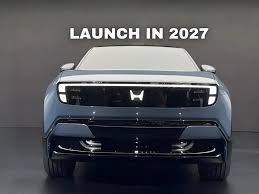 Exterior Design
Exterior Design
The Honda 0 α (Alpha) EV is a next-generation mobility. Its front end is dominated by thin LED matrix headlights that flow seamlessly along the nose to create one continuous light signature — a reflection of purity and innovation. The body moves as a single aerodynamic unit, with honed surfaces and no superfluous wrinkles, conveying a sense of easy movement even at rest. Concealed door handles, flush-mounted glass panels, and impossibly slender mirrors all help present a clean, unbroken line that values the look as much as the functionality.
“Thin, Light, Wise” Design Philosophy for Improved Range & Handling:
- The Alpha is the first Honda electric vehicle to comprehensively apply the company’s philosophy. This ideology aims to minimize bulk, improve agility, and achieve optimal efficiency.
- “Thin” describes its sleek shape and minimal aerodynamic drag; “Light” focuses on shedding weight through advanced materials; and “Wise” emphasizes the smart deployment of technology to deliver best-in-class real-world performance.
- This combination enables the Alpha to achieve greater range, smoother dynamics, and enhanced stability, particularly on fast highway driving.
- Honda engineers talk of this philosophy as getting back to the simplicity of motion, fueled by human balance and light architecture.
Aerodynamic Efficiency & Lightweight Body Structure:
- All design elements on the Alpha EV serve an aerodynamic function — from the airflow-enhancing front bumper to the sloping roofline and rear diffuser.
- The SUV’s active aero grille dynamically adjusts to optimize airflow for driving conditions, balancing cooling and drag savings.
- All these together add up to a drag coefficient below 0.24 Cd, putting it among the most aerodynamically refined EVs in its segment.
Design Language Preview for Future Honda EVs (Including India-Focused Models):
- The 0 Alpha’s styling cues — its thin LED signature, floating roof, and pure surfacing — will be incorporated into all future Honda EVs worldwide.
- For India, Honda intends to localize this styling language to meet local market requirements while retaining the same futuristic DNA.
- Look out for future Honda electric SUVs and sedans in India with similar restraint, aerodynamicity, and smart proportions.
- In short, the Alpha establishes the visual direction for Honda’s electric future as a design blueprint for the automaker’s forthcoming 2027–2030 EV line.
Interior & Cabin Experience
The Honda 0 α (Alpha) EV lines are straight, and the ambiance is soothing and meditative.
Sustainable Materials
- A full-width panoramic glass roof illuminates the cabin with natural light, creating a sense of openness and connection with nature.
- Zero-gravity seats take their cue from NASA ergonomics — developed to minimize fatigue, accommodate natural posture, and improve blood circulation over long journeys.
- Upholstery and trim are crafted from eco-friendly, recycled, and plant-based materials, a nod to Honda’s sustainability focus without sacrificing luxury.
- Subtle ambient lighting adjusts by time of day and driving mode, creating an emotionally responsive cabin atmosphere.
Futuristic Cockpit with AI-Assisted Interface & Augmented-Reality Head-Up Display (AR-HUD):
- The cockpit combines analog simplicity with digital smarts — a clean horizontal design dominated by a broad digital cluster and voice-sensitive controls.
- The AI personal assistant learns driver behaviour, automatically adjusts settings, and offers proactive route hints or energy-optimization tips.
- A next-generation Augmented Reality Head-Up Display (AR-HUD) beams critical information such as navigation arrows, hazard lights, and surrounding vehicles onto the windshield.
- Altogether, they turn the driving experience into one of natural human-to-machine interaction, completely obviating the need to take one’s eyes off the road.
Comfort & Digital Detox Philosophy — Technology That Assists, Not Diverts:
- The Alpha cabin adheres to a “Digital Detox” philosophy, where technology is there to help, not to overwhelm.
- Few touchpoints, gentle haptic feedback, and voice interactions keep the driver’s focus on the experience — not on screens.
Battery, Range & Performance
The Honda 0 α (Alpha) EV is a next-generation powertrain that optimizes performance, efficiency, and durability. The SUV will be powered by Honda’s newest-generation solid-state or high-density lithium-ion battery pack, which is already in advanced testing and development. The result is an electric car that drives dynamically and offers exceptional long-distance range with a minimal environmental footprint.
Forecasted Range: 600–700 km Per Charge (WLTP):
- The Alpha EV is forecast to have a real-world range of 600-700 km on a single charge (WLTP cycle).
- This range is enabled by Honda’s energy-dense battery chemistry and the lightest-in-class vehicle structure.
- For real-world Indian driving conditions, the estimated range is approximately 550–600 km, making it practical for both city and highway use.
- Efficiency-driven design enables Honda to beat some of the world’s competitors on range-to-weight ratio.
Fast Charging: 10–80% in ~25 Minutes (DC Fast Charger):
- With 800V architecture, the Alpha is capable of ultra-fast DC charging.
- It can be charged from 10% to 80% in about 25 minutes, making it perfect for long journeys.
- The battery’s intelligent battery temperature control system delivers a steady charging speed in any weather.
- Honda will also add V2L (Vehicle-to-Load) capability, enabling the Alpha to charge external devices or homes as needed.
Technology & Safety
The Honda 0 α (Alpha) EV isn’t an electric SUV — it’s a rolling technological ecosystem. The foundation of it is the next-generation Honda Sensing 360+ ADAS suite, a huge step forward in safety, autonomy, and driver intelligence. It builds on Honda’s decades-long safety heritage, expands sensing in all directions — forward, rear, and lateral — and forms a 360-degree cocoon of safety around the vehicle. The combination of radar, lidar, camera, and AI-powered predictive analysis ensures the Alpha doesn’t merely react to hazards but anticipates them.
AI-Based Driver Monitoring & Adaptive Driving Assist:
- The Alpha features AI-based driver monitoring that continuously monitors the driver’s sitting posture, eye gaze, and fatigue level using interior sensors.
- In case of drowsiness or diversion, the system softly warns the driver with visual and haptic feedback.
- The Adaptive Driving Assist feature autonomously adjusts steering, acceleration, and braking inputs to ensure maximum comfort and control.
- In semi-autonomous mode, the AI learns driving behaviours and fine-tunes assistance to suit the driver’s preferred driving style — providing an even more personal driving experience.
Over-The-Air (OTA) Updates & Cloud-Based Battery Health Management
- The Alpha has real-time OTA software updates, enabling Honda to remotely update continuously improving features, safety algorithms, and UI performance.
- With cloud connectivity, owners can see battery health, charge cycles, and range analytics through the Honda EV mobile app.
- AI-powered predictive diagnostics alert owners to maintenance requirements before problems develop, reducing downtime.
- This integrated system keeps the Alpha technologically advanced throughout its lifetime, reflecting the changing demands of EV drivers.
Integration with Honda’s “e: N Architecture W” Platform:
- The 0 Alpha is developed on Honda’s brand-new “e: N Architecture W”, a global modular EV platform designed for efficiency, performance, and safety.
- The architecture accommodates dual-motor arrangements, 800V configurations, and scalable battery configurations, making it flexible across varying models in the 0 Series.
- It includes smart thermal management, advanced chassis stiffness, and real-time torque control for enhanced handling and ride comfort.
India Launch Plans (2027)
Honda has officially announced the launch of the zero α (Alpha) EV in the Indian market by 2027, which is the company’s most ambitious foray into the premium electric SUV segment. This follows Honda’s overall vision to cement a robust EV presence in India, underpinned by local production and the phased introduction of its 0 Series product lineup.
Local Assembly (CKD/SKD) for Price Optimization:
- The Alpha EV will be locally assembled in India through the CKD (Completely Knocked Down) or SKD (Semi-Knocked Down) process.
- This approach will help Honda save on import duties and keep retail prices low, thereby increasing competition among mainstream EV players.
- Local production can be done at Honda’s Tapukara plant (Rajasthan), which is expected to be modernized for EV manufacturing and battery management.
- Honda, over the years, wants to raise localization levels, including sourcing EV components and battery modules domestically.
Anticipated Price Range: Rs 45–55 Lakh (Ex-Showroom):
- The 0 Alpha EV is expected to be priced between Rs 45 lakh and Rs 55 lakh (ex-showroom) in the country.
- The price would position it at the top of the mid-premium EV SUV space, competing against internationally known models.
- Honda intends to justify the cost with an edge in technology, global design, and unparalleled reliability as part of its brand.
- Early buyers and luxury EV fans are likely to be the initial target customers.
Honda’s EV Roadmap for India
| Phase | Year | Key Models | Strategy | Market Focus |
| Phase 1 | 2027 | Honda 0 α (Alpha) | Import/CKD assembly | Premium EV SUV launch, brand positioning |
| Phase 2 | 2028–2029 | Honda 0 β (Beta) | Locally developed compact EV | Urban mobility and the affordable segment |
| Phase 3 | 2030 onward | Honda 0 γ (Gamma) | Global + India co-developed model | Long-range sedan for intercity commuters |
| Phase 4 | 2030+ | Localized EV ecosystem | Battery assembly, supplier partnerships | Sustainable production and export hub |
Major Competitors in India
The 0 Alpha EV will join an extremely competitive segment filled with premium electric SUV offerings like:
- Hyundai Ioniq 5 – its design and comfort are its hallmark.
- Kia EV6 – performance-centric crossover with great tech appeal.
- BYD Seal – range- and price-beating luxury sedan competitor.
- Volvo EX30 – subcompact luxury EV from the Swedish brand.
- Tata Avinya (anticipated) – India’s homegrown luxury electric upcoming concept.
- Honda’s differentiation lies in its Japanese craftsmanship, solid-state battery technology, and long-term reliability of its after-sales network.
Market Position & Strategy
Honda’s foray into India’s EV market with pursuing a gradual, top-down deployment, beginning with a high-end flagship to build brand equity in the electric mobility space. Long-term sustainability before introducing mass-market variants. With the Alpha taking center stage, Honda is preparing to merge its history of trustworthiness and engineering precision with the evolving needs of India’s new-generation EV consumers.
Positioning: Luxury + Performance + Sustainability:
- The 0 Alpha EV will be a premium lifestyle SUV that blends performance-led engineering with sophisticated Japanese design.
- Honda wants to appeal to tech-savvy professionals, green buyers, and luxury seekers who desire both status and functionality.
- The Alpha’s positioning revolves around the trio of Luxury (style & comfort).
Opportunities for Partnership:
- To strengthen its EV ecosystem, Honda is believed to be exploring partnerships with Indian component and battery manufacturers.
- Possible collaborations with local companies include battery pack assembly, BMS (Battery Management Systems), and charging infrastructure development.
- These alliances will help Honda reduce manufacturing costs, comply with the Make in India program, and increase local content.
- Honda is negotiating with renewable energy suppliers for eco-friendly charging solutions and green power procurement for its future EV operations as well.
Possible Utilization of India as an Export Hub for South-East Asian Markets:
- Honda’s long-term vision includes using India as a strategic EV export hub for neighbouring markets such as Thailand, Indonesia, and the Philippines.
- The Alpha’s modularity enables localized assembly and setup to align with local regulations and consumer tastes.
- Making India a base for EV production and export would lower delivery costs and enhance Honda’s competitiveness throughout Asia.
- It is in line with Honda’s global production philosophy — make where demand increases, making it scalable and economically viable.
Expert Take & Future Outlook
The first wave of EVs from Hyundai, Kia, and BYD, Honda has the advantage of watching market trends, charging infrastructure development, and changing consumer trends. Experts point out that the Rs 45–55 lakh price segment is a shrewd balance — expensive enough to establish Honda as an upscale EV brand, yet affordable enough for India’s burgeoning upper-middle and executive classes. The moderate entry helps Honda establish credibility, develop its technology, and garner a loyal EV following before going large to mass-market models in the next phase of its shift.
Influence on Honda’s Brand Perception in India
- The introduction of the Alpha EV should revitalize Honda’s brand in India, transforming its image from that of a conservative ICE manufacturer into a mobility pioneer of the future.
- Experts believe Honda’s global design and technological strength will enable it to regain its position in a market increasingly drawn to EV sophistication.
- The Alpha’s upscale positioning would lift Honda’s brand worth, much like the City sedan did in the 2000s — but now, in the era of electric vehicles.
- Its achievement will solidify Honda as a reliable, aspirational marque and also win over more youthful, technologically savvy Indian buyers.
What This Means for Honda’s Transition to ICE-free EVs by 2030
- Alpha’s launch is the pivot point of Honda’s transition plan — the entry point to its entire transition from internal combustion to electric powertrains.
- Honda has already made a worldwide commitment to sell 100% EV and fuel-cell vehicles by 2040, and the Indian roadmap dovetails with this focus.
- Honda intends to phase out ICE models progressively by 2030, replacing them with hybrids and full-electric vehicles in mainline segments.
- Alpha is the technological proof of concept for Honda’s future EVs, providing a simpler platform, charging technology, and an AI system that will transition to mass production.
Future Models in the Honda 0 Series Lineup (Alpha, Beta, Gamma) Due by 2030:
- After Alpha, Honda will introduce the 0 Beta (β) — a small, city-oriented EV targeting city dwellers and small families by 2028–2029.
- Follows the 0 Gamma (γ), a long-distance grand tourer sedan designed for intercity high-end travel.
The three together — Alpha, Beta, and Gamma — will comprise Honda’s entire EV ecosystem.
Conclusion
Honda’s launch of the zero α (Alpha) EV is a milestone moment in its international evolution. As the initial model of the “Honda 0 Series,” the Alpha captures the philosophy of beginning anew — resetting design, performance, and purpose — to build cars that are lighter, smarter, and genuinely attuned to the requirements of tomorrow’s drivers.
With its 2027 India launch, Honda aims to marry Japanese innovation with India’s rapidly evolving EV landscape, uniting cutting-edge technology and emotive design to speak to contemporary Indian buyers.
In all senses, the Alpha is not just a car — it’s a declaration. A declaration that Honda’s electric journey starts not from what it has accomplished until now, but from what it’s bold enough to envision today.
“Alpha marks Honda’s rebirth — from zero to the future.”
FAQs
Q1: When is the launch date of the Honda 0 α EV in India?
A: Honda officially announced a 2027 launch timeline for India, which will be its first premium all-electric SUV launch in the nation.
Q2: What will be the range of the Honda 0 α EV?
A: The Honda 0 Alpha EV is likely to offer a real-world driving range of approximately 600–700 km per charge (WLTP), based on driving conditions and battery setup.
Q3: What will be the expected price of the Honda 0 α EV in India?
A: The EV is likely to carry a price in the range of Rs 45 lakh to Rs 55 lakh (ex-showroom), falling in the premium electric SUV segment.
Q4: On which platform is Honda 0 α EV based?
A: It is designed on Honda’s e: N Architecture W, a next-gen modular EV platform to deliver enhanced efficiency, safety, and driving dynamics.
Q5: Whom does it compete with in India?
A: Honda 0 Alpha EV will compete with Hyundai Ioniq 5, Kia EV6, BYD Seal, Volvo EX30, and forthcoming Tata Avinya, all of which are in the mid-to-premium EV SUV segment.

